Both hearing aids and cochlear implants have their benefits and limitations, and the choice between them depends on several factors, including the type and severity of hearing loss, lifestyle, personal preferences, and medical eligibility. In this blog post, we will explore these factors in depth, aiming to provide our readers with a comprehensive understanding of the options at their disposal.
Through expert insights, real-life testimonials, and a breakdown of the pros and cons, this topic provides individuals and their families with the knowledge they need to navigate this important decision-making process.
Hearing Aids
Hearing machines are small electronic devices that are designed to improve hearing for individuals with hearing loss. Ear machines amplify sounds, making them clearer and more audible. Various components are combined to create a perfect hearing aid device. These components include a microphone that picks up sounds, an amplifier that increases the volume of these sounds, and a speaker that delivers the amplified sounds into the ear. Hearing aids are suitable for individuals with mild to moderate hearing loss and are often the first line of treatment for hearing impairments.
Benefits of Hearing Aids
Improved Communication:
Clearer Speech Perception: Hearing aid machines enhance the perception of speech sounds by amplifying them to a level where the wearer can hear and understand conversations clearly. This is especially beneficial in noisy environments where background noises might otherwise drown out speech.
Enhanced Phone Conversations: Hearing aid devices improve phone conversations by making the caller’s voice louder and clearer. Many modern hearing aids are also equipped with Bluetooth technology, allowing direct streaming from smartphones, further enhancing phone communication.
Enhanced Social Interactions:
Participation in Social Activities: With improved hearing, individuals can actively participate in social gatherings, family events, and community activities. This fosters a sense of belonging and reduces social isolation, leading to a more fulfilling social life.
Better Understanding of Social Cues: Ear machines enable the wearer to pick up subtle social cues, such as tone of voice and facial expressions, facilitating more meaningful and empathetic interactions with others.
Increased Confidence:
Boosted Self-Esteem: By providing better hearing, hearing devices boost self-esteem and self-confidence. Individuals feel more capable and comfortable in various situations, which can positively impact both personal and professional lives.
Improved Performance at Work: Clear hearing enhances communication at the workplace, allowing individuals to participate actively in meetings and discussions. This improved engagement can lead to increased productivity and career advancement.
Non-Invasive and Suitable for Various Types of Hearing Loss:
Non-Invasive Solution: Hearing aids offer a non-invasive approach to addressing hearing loss. Unlike surgical options like cochlear implants, hearing aids do not require invasive procedures, making them a preferred choice for many individuals.
Versatility in Hearing Loss: Hearing aids are available in various styles and models, catering to different types and degrees of hearing loss. From mild to severe hearing loss, there are hearing aids designed to provide appropriate amplification for each specific condition.
Improved Safety and Awareness:
Environmental Sounds: Hearing machines help individuals perceive important environmental sounds, such as alarms, sirens, and approaching vehicles. This increased awareness contributes to personal safety, especially in potentially risky situations.
Better Balance: Hearing aids, by improving spatial awareness through sound, can contribute to better balance, reducing the risk of falls and accidents.
Types of Hearing Aids
Behind-the-Ear (BTE) Hearing Aids:
BTE hearing aids are housed in a small plastic case that fits snugly behind the ear. A clear tube connects the case to a custom earpiece or earmold inside the ear canal. BTE hearing aid machines are versatile and can cater to a wide range of hearing loss, from mild to profound. They are suitable for all age groups, including children.
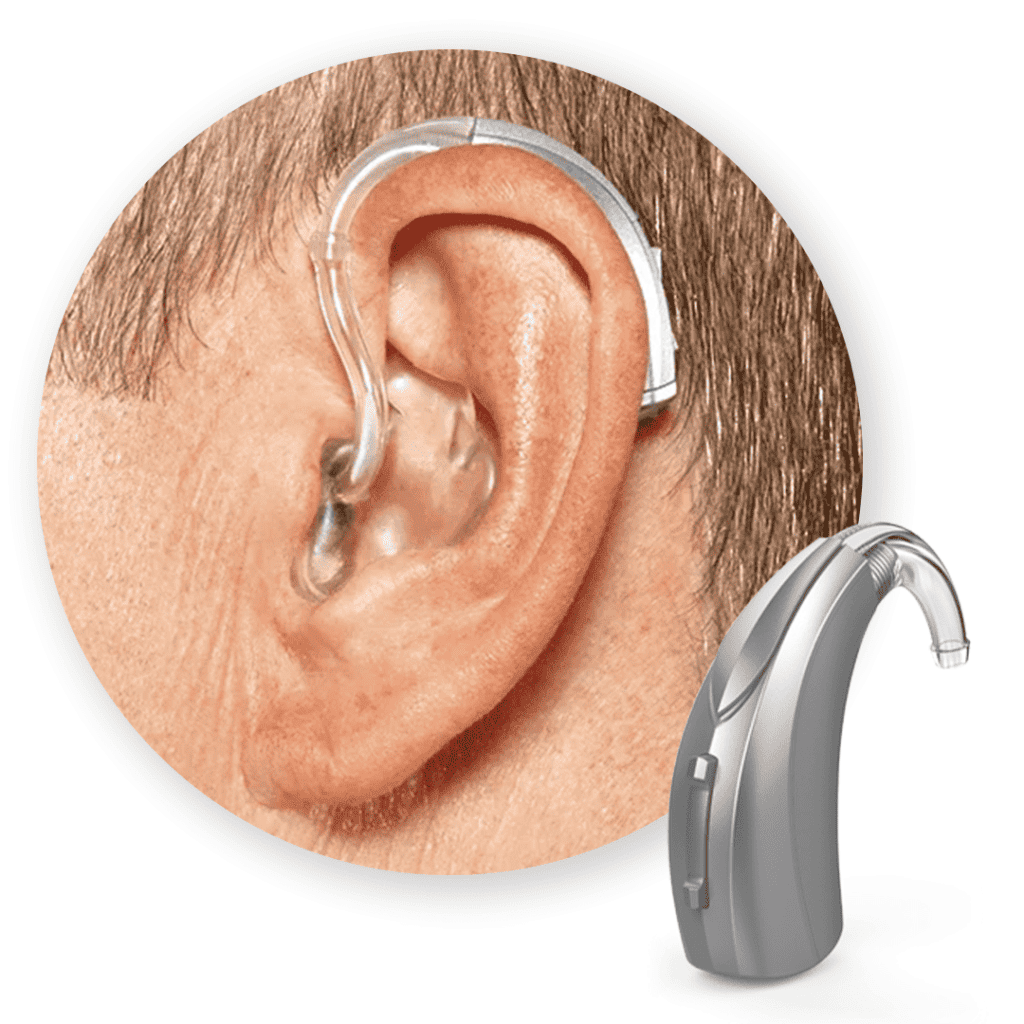
Advantages: BTE hearing devices offer powerful amplification capabilities due to their larger size, and their design allows for easy cleaning and maintenance. They also often come with additional features like directional microphones and telecoils for improved functionality.

In-the-Ear (ITE) Hearing Aids:
ITE hearing aids are custom-made to fit entirely inside the outer ear. They are slightly larger than CIC and IIC hearing aids but smaller than BTE models. ITE hearing aid devices are suitable for mild to severe hearing loss and offer a good balance between visibility and functionality.
Advantages: ITE hearing machines are convenient to handle and can incorporate features like volume controls and telecoils. Their larger size allows for longer battery life and easy adjustment.
In-the-Canal (ITC) Hearing Aids:
ITC hearing aids sit inside the ear canal, with only a small portion visible in the outer ear. They are custom-made to fit the shape of the individual’s ear canal. ITC hearing aids are suitable for mild to moderate hearing loss and offer a discreet appearance.
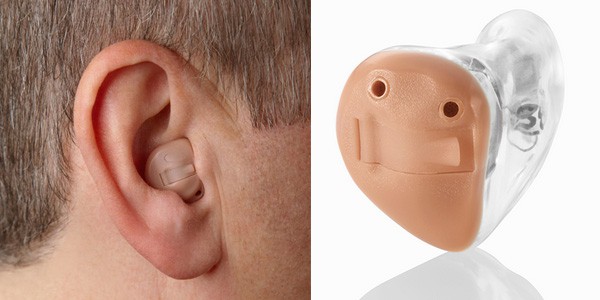
Advantages: ITC hearing aid devices are less visible than ITE hearing aids and provide a more natural sound experience due to their placement in the ear canal. They also offer easy access to volume controls and other manual adjustments.
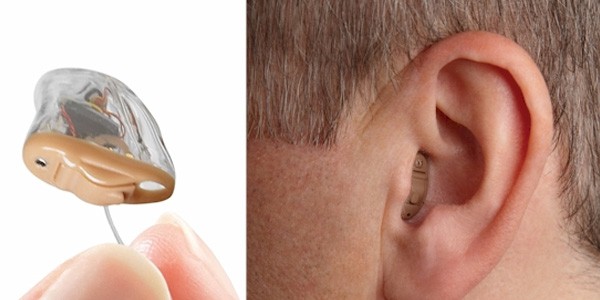
Completely-in-the-Canal (CIC) Hearing Aids:
CIC hearing aids are the smallest custom-made hearing aids, fitting entirely inside the ear canal and barely visible from the outside. CIC hearing devices are suitable for mild to moderate hearing loss and are preferred by individuals looking for the most discreet option.
Advantages: CIC hearing machines offer excellent cosmetic appeal as they are nearly invisible. They also provide natural sound localization and reduced wind noise due to their placement deep in the ear canal.
Receiver-in-Canal (RIC) Hearing Aids:
RIC hearing aids have a behind-the-ear component that houses the electronics, while the receiver (speaker) sits inside the ear canal. The two parts are connected by a thin wire. RIC hearing aids are suitable for mild to severe hearing loss and offer a good balance between visibility and performance.
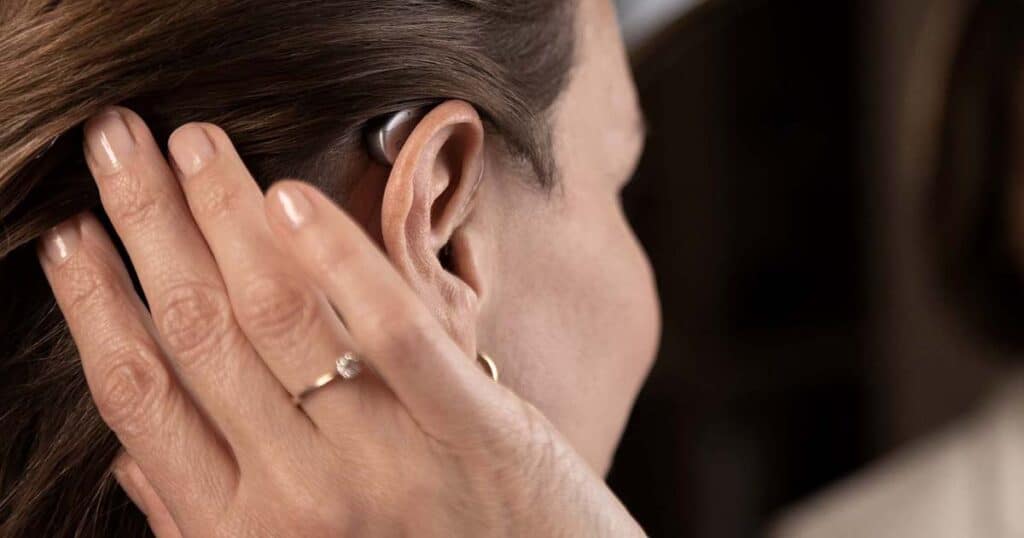
Advantages: RIC hearing devices provide clear sound quality and are less susceptible to feedback (whistling) due to the separation of the microphone and receiver. They are comfortable to wear and allow for easy adjustment.
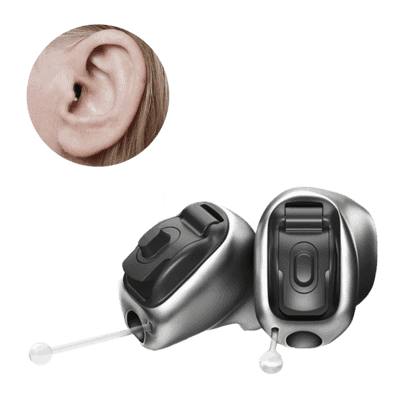
Invisible-in-the-Canal (IIC) Hearing Aids:
IIC hearing aids are the smallest and most discreet type, fitting deeply inside the ear canal where they are virtually invisible. IIC hearing aids are suitable for mild to moderate hearing loss and are preferred by individuals seeking the utmost discretion.
Advantages: IIC hearing machines are completely hidden from view, making them cosmetically appealing. They provide natural sound quality and are comfortable to wear, even while talking on the phone or wearing headphones.
Choosing the right type of hearing aid depends on individual hearing needs, preferences, lifestyle, and the degree of hearing loss. It’s crucial to consult with an audiologist who can conduct a thorough evaluation and recommend the most suitable option tailored to each person’s requirements.
Hearing Aid Brands
Several reputable brands offer a wide range of hearing aids, each catering to specific needs. Widex, Phonak, Oticon, Resound, Starkey, and Signia are among the top contenders, known for their innovative technologies and user satisfaction.
Choosing the Best Hearing Aid
Selecting the right hearing aid involves considering factors like the degree of hearing loss, lifestyle, budget, and personal preferences. Consulting an audiologist is essential for a comprehensive hearing assessment and professional guidance.
Cochlear Implants
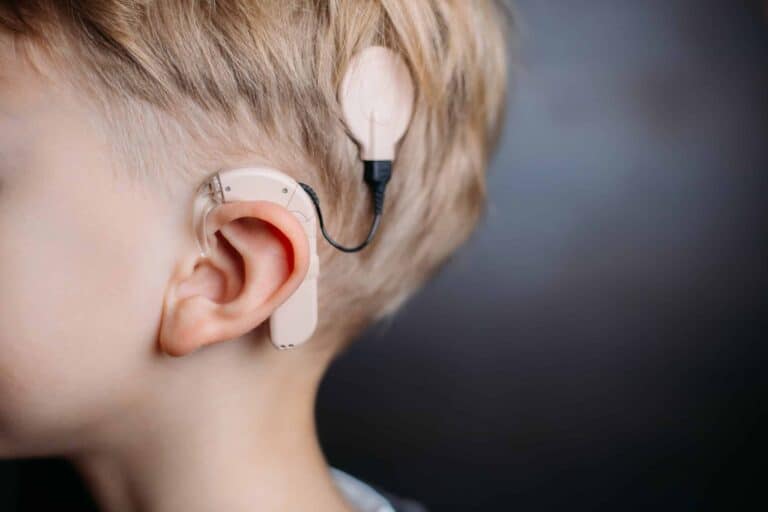
Cochlear implants are sophisticated medical devices that are surgically implanted to provide a sense of sound to individuals with severe hearing loss to profound hearing loss who gain limited or no benefit from hearing aid devices. Unlike ear machines, which amplify sounds, cochlear implants work by directly stimulating the auditory nerve in the inner ear.
The implant consists of an external component, worn behind the ear, which captures sounds and processes them into electrical signals. These signals are then transmitted to an internal component surgically placed under the skin. The internal component further converts the signals into electrical impulses, which are sent to the auditory nerve, allowing the brain to perceive sound.
Cochlear implants are particularly effective for individuals who have damaged or non-functioning hair cells in the inner ear, as the implants bypass the damaged cells and directly stimulate the auditory nerve. Cochlear implantation is a surgical procedure and requires comprehensive evaluation and rehabilitation to achieve optimal results.
Read About : Bone-Anchored Hearing Aids (BAHA)
Surgical Process
Cochlear implantation is a remarkable surgical procedure designed to restore hearing for individuals with severe to profound hearing loss. This intricate process involves the implantation of a small electronic device, known as a cochlear implant, which can provide a sense of sound by directly stimulating the auditory nerve. Here’s a detailed look at the surgical steps involved:
1. Pre-Surgery Evaluation:
Before the surgery, a comprehensive evaluation is conducted. This includes hearing tests, imaging scans, consultations with an audiologist, ear, nose, and throat (ENT) specialist, and a cochlear implant surgeon. The patient’s overall health and medical history are thoroughly assessed to ensure they are suitable candidates for the procedure.
2. Anesthesia and Incision:
The surgery is performed under general anesthesia to ensure the patient remains unconscious and pain-free throughout the procedure. A small incision is made behind the ear, exposing the mastoid bone, which houses the cochlea – the spiral-shaped organ in the inner ear responsible for hearing.
3. Creating a Pathway:
The surgeon carefully drills into the mastoid bone to access the cochlea. A precise and careful approach is crucial to prevent damage to the delicate structures of the inner ear. Once the cochlea is visible, a small opening is made into its bony wall.
4. Inserting the Electrode Array:
The cochlear implant consists of an electrode array, a bundle of tiny electrodes attached to a thin, flexible wire. This electrode array is gently inserted into the cochlea through the opening made in its bony wall. The electrodes are strategically placed to stimulate specific regions of the auditory nerve corresponding to different frequencies of sound.
5. Securing the Device:
The main body of the cochlear implant, containing the necessary electronics and a receiver-stimulator, is implanted under the skin behind the ear. The incision is closed, and the device is secured in place.
6. Healing and Activation:
After the surgery, there is a healing period during which the incision site must be kept clean and free from infection. Once the surgical site has healed, typically after a few weeks, the external components of the cochlear implant, such as the microphone and speech processor, are fitted and activated. The audiologist customizes the device’s settings based on the patient’s hearing needs and conducts extensive programming sessions to optimize the auditory experience.
7. Rehabilitation and Follow-Up:
Post-implantation, the patient undergoes extensive auditory training and speech therapy to learn how to interpret the new sounds provided by the cochlear implant. Regular follow-up appointments with the audiologist and ENT specialist are essential to monitor progress, make necessary adjustments to the device settings, and address any concerns the patient may have.
Benefits of Cochlear Implants
Cochlear implants are particularly effective for individuals with severe to profound hearing loss. They provide clearer sound perception and speech understanding, especially in noisy environments. They are also beneficial for those who gain limited or no benefit from hearing aids.
Risks
Cochlear implants, while generally regarded as safe and effective, are not without their risks. The surgical procedure itself carries potential complications, including the risk of infection, damage to the facial nerve, or the development of tinnitus, a condition characterized by ringing or buzzing in the ears. These risks underline the importance of a skilled surgical team and thorough preoperative evaluations to minimize such adverse events.
Moreover, the outcomes of cochlear implantation can differ significantly from one individual to another. Factors such as the extent of hearing loss, the duration of deafness, and the overall health of the patient can influence the results. Additionally, there is a learning curve associated with using the cochlear implant effectively. Patients need time and patience to adapt to the new way of hearing, which involves learning to interpret the signals sent by the implant to the auditory nerve. Proper rehabilitation and ongoing support from healthcare professionals are crucial to help patients navigate this adjustment period and maximize the benefits of the implant.
FAQ's
Q1: How long does a hearing aid last?
Hearing aids typically have a lifespan of 3-7 years, depending on maintenance and technology advancements
Q2: Is surgery required for a cochlear implant?
Yes, a surgical procedure is necessary to implant the device, but it’s generally considered safe and effective.
Q3: Can children get cochlear implants?
Yes, children above the age of 12 months can be candidates for cochlear implants.
Q4: Is there a risk of infection with cochlear implants?
While there is a minimal risk of infection, it’s relatively rare, and proper care can reduce the chances of it.
Q5: Will insurance cover the cost of a cochlear implant?
Many insurance plans offer coverage for cochlear implant surgery and related expenses.
Conclusion
The choice between hearing aids and cochlear implants depends on individual factors, including the severity of hearing loss, lifestyle, and personal preferences. Hearing aids are suitable for mild to moderate hearing loss and offer various styles and technologies to cater to diverse needs. Cochlear implants, on the other hand, are a powerful solution for severe to profound hearing loss, providing a more direct way of stimulating the auditory nerve.
Ultimately, the decision should be made in consultation with expert audiologists or healthcare professionals. Understanding the benefits, risks, and ongoing commitments associated with each option is vital in making an informed choice, ensuring a transformative and fulfilling hearing experience tailored to individual needs and aspirations.




